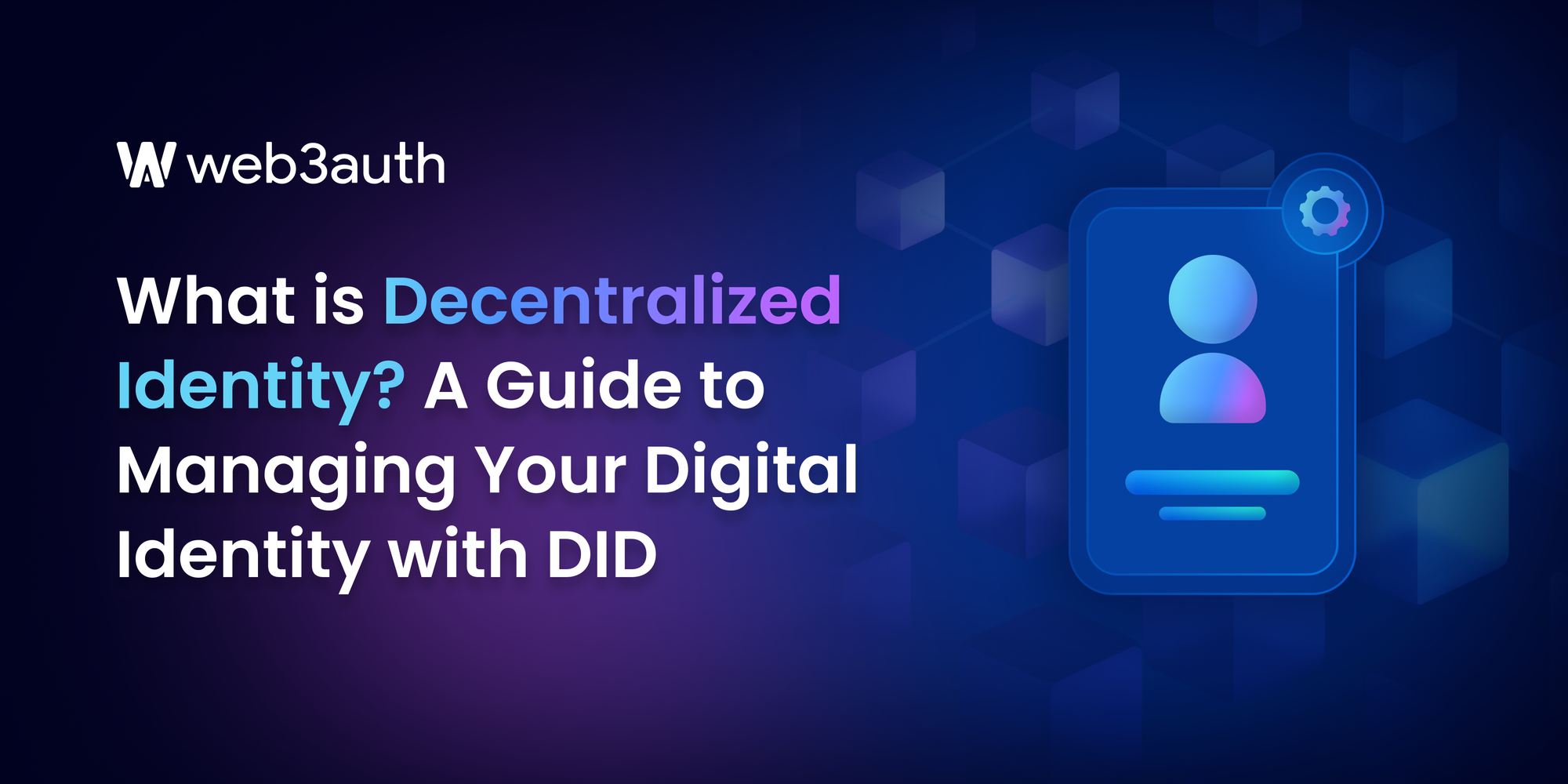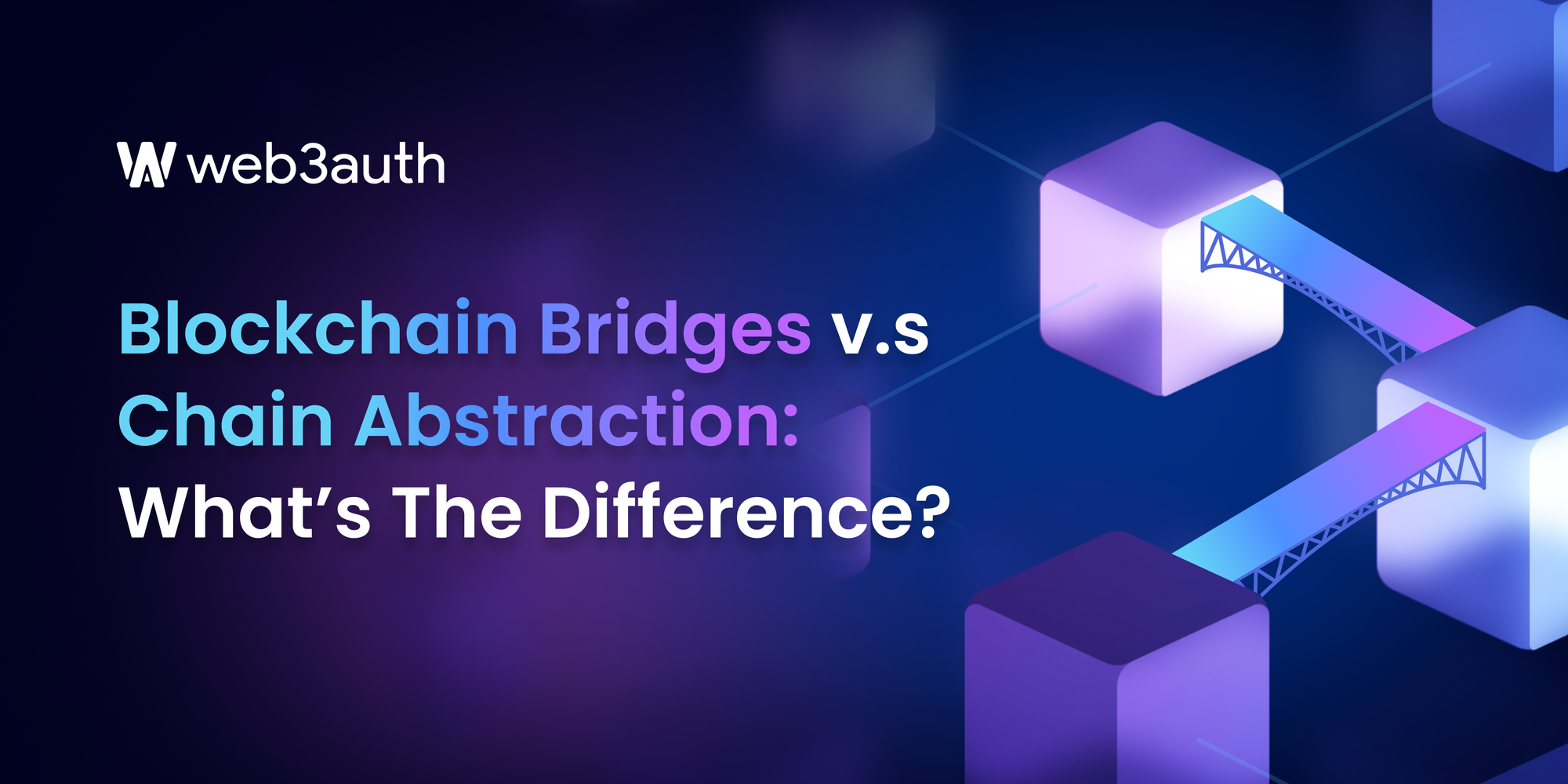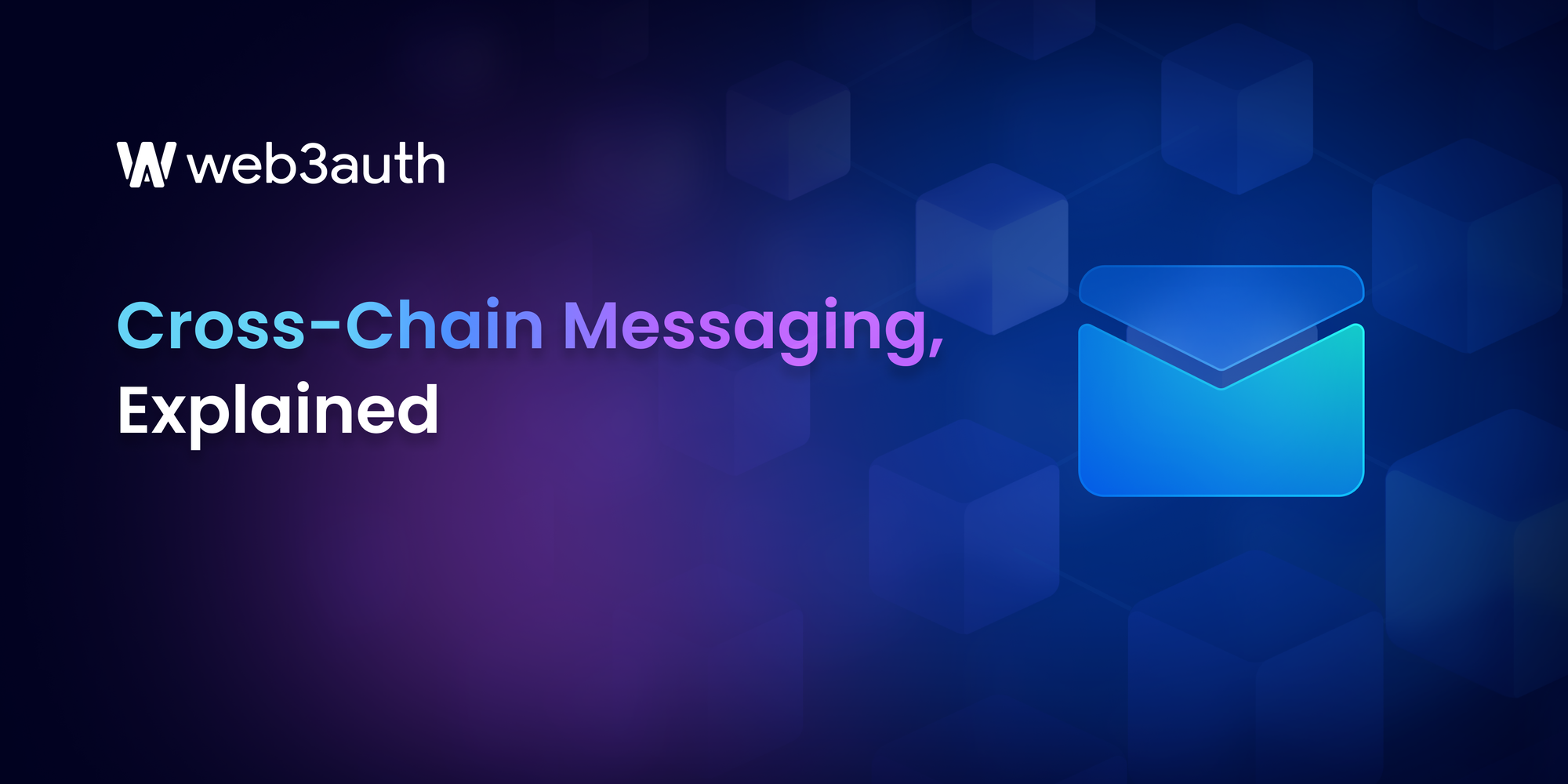On this page
In a time when data breaches are all too common, the value of retaining control over our data and assets has never been clearer. Reclaiming that control from centralized authorities has driven many users to explore decentralized solutions. According to Grand View Research, the decentralized identity industry is projected to reach USD 102 billion by 2030, a clear sign of the growing demand for secure, user-owned digital identities.
It’s easy to see why users gravitate toward decentralization—it offers greater privacy, security, and autonomy, reducing dependence on centralized entities that often control or misuse personal information. However, decentralization has introduced fragmentation, where different blockchains and decentralized systems operate in isolation, unable to communicate or share data effectively.
What is Decentralized Identity?
Decentralized identity puts users in control of their personal data and digital identity, shifting the power away from centralized authorities like governments, corporations, and social platforms. Here’s what decentralized identity involves for users:
Self-Sovereign Identity (SSI)
At the core of decentralized identity is the concept of self-sovereign identity (SSI), meaning users fully own and manage their digital identity without intermediaries. Unlike traditional systems where companies store and control your information, DID systems allow users to store, manage, and share their data directly. This reduces dependency on third-party services and mitigates the risk of data breaches.
Control Over Personal Data
With decentralized identity, users decide what personal information to share and with whom. For example, if you need to verify your age or qualifications, a decentralized identity system lets you prove these details without revealing unnecessary information, like your exact date of birth. Users can grant or revoke access to data as needed, providing a high level of privacy.
Private Key Management
Decentralized identity systems rely on cryptographic keys for security. Each user has a public key (for verification) and a private key (kept secret for signing transactions and proving identity ownership). Managing these keys is crucial; losing the private key can mean losing access to the decentralized identity, underscoring the importance of secure key management.
Enhanced Privacy and Security
Without central databases storing user data, decentralized identity systems greatly reduce the risk of large-scale data breaches. Additionally, technologies like zero-knowledge proofs (ZKPs) allow users to verify their identity without exposing sensitive personal information, enhancing privacy and security.
Interoperability Across Platforms
Decentralized identifiers (DIDs) are designed to work across platforms, blockchains, and ecosystems. This means users can maintain a single identity that functions seamlessly across different applications, reducing the need to create separate accounts or profiles for each service.
How Does DID Work?
A DID is simply a unique identifier that’s paired with cryptographic keys to ensure only you can access or share your data. It’s stored in a secure, decentralized way on a blockchain, so no single company or organization owns it. You store the associated private key (like a password) in a digital wallet, which you use to sign and share information securely.
Imagine that you have a DID linked to your digital credentials (like a university degree) – when applying for a job, instead of sending a copy of your certificates, you could share your DID. The employer verifies it through the blockchain and confirms you have the degree without needing to call the university.
Getting Started with Decentralized Identity
For users interested in decentralized identity, here’s how to get started:
1. Choose a Digital Wallet
Begin by selecting a digital wallet that supports decentralized identity. Popular options include MetaMask, ONTO Wallet and many others. These wallets securely store DIDs and verifiable credentials (VCs) and provide an interface for managing your decentralized identity.
2. Connect to a DID-Compatible Service
Most wallets don’t support DID directly, so you’ll need to connect your wallet to DID providers like Spruce or Ceramic to generate your DID. Once connected, follow the instructions on the DID provider’s platform to generate a DID. This usually involves:
- Selecting DID format (e.g., did:ethr for Ethereum).
- Generating the DID: The platform will use your wallet-linked Ethereum address as a basis to create your DID.
After the DID is generated, you may receive a unique identifier in the format: did:ethr:yourUniqueEthereumAddress.
3. Manage Verifiable Credentials (VCs)
The DID provider may allow you to manage verifiable credentials (VCs) associated with your DID. These credentials can include proof of identity, age, or other verified data.
Store these credentials securely in your wallet. Some DID platforms also provide options for backup and recovery, ensuring you don’t lose access to your credentials.
4. Use DID to Interact with Services
Once your DID is set up, you can start interacting with services that support decentralized identity. For example, Swisscom, one of Switzerland’s largest telecommunications providers, has implemented decentralized identity in financial services. Using self-sovereign identity (SSI), Swiss banks allow customers to authenticate their identity with a DID rather than traditional KYC (Know Your Customer) methods.
5. Maintain Control and Manage Privacy
A key benefit of decentralized identity is that users control who has access to their credentials. You can grant or revoke access to data as needed, ensuring privacy and control over your information.
Chain Abstraction and DIDs
Chain abstraction hides the complexities of interacting with individual chains. Without chain abstraction, users often have to switch networks, manage multiple wallets, and understand the intricacies of each blockchain. It allows for scalability by optimizing interactions based on performance, balancing load across different networks, and avoiding bottlenecks. This helps DIDs scale efficiently without the risk of fragmented experiences or performance degradation.
It can also automatically route identity-related transactions to the most efficient chain, minimizing fees and avoiding network congestion. For instance, if Ethereum’s gas fees are high, chain abstraction can route transactions through a Layer 2 solution or a less congested blockchain, making DID usage more affordable.
Your Digital Identity Should Be Simple
Imagine your digital identity is like a keyring full of keys—each key represents a login, profile, or ID for accessing various places, like your bank, social media, or e-commerce sites. Managing all these keys is cumbersome and can feel insecure, especially when it’s easy to forget or misplace them. Decentralized identity offers a solution by giving you a master key—a secure, personal digital identity that you control and can use anywhere. This approach means you can access a wide range of services while retaining control over your data.
Chain abstraction ensures efficiency, by optimizing costs and scalability,ensuring that DIDs can truly be a seamless, scalable, and user-friendly solution across the web. For a deeper dive into how decentralized identities are reshaping digital identity and privacy, check out this comprehensive guide on decentralized identities.









